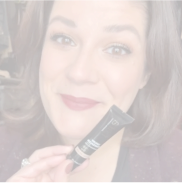Talking about facial hair and how to remove it used to be a taboo topic – but no more! In this day and age, there is a multitude of options when it comes to facial hair removal, and we’re here to help you figure out what the right method is for your skin.
If your skin skews on the more sensitive side, facial hair removal can be even more daunting, and oftentimes seem like more trouble than it’s worth. That’s why in this article, we’re going to give you options for gentle facial hair removal with sensitive skin in mind.
To try any of the methods we present to you below, we recommend that you do so at a time when you will be in the comfort of your own home for a few hours thereafter to allow your skin a proper recovery period, free of makeup.
5 Facial Hair Removal Methods
Tweezing: This is likely the most common method used for shaping eyebrows and plucking those pesky chin hairs. In terms of pain levels, tweezing tends to fall low on the totem pole. Many people are accustomed to tweezing and therefore are usually rather unbothered by it, but there are certain things you can do to make it even more tolerable.
-
- Tweeze after a hot shower, or after you wash your face. When you use warm water on your skin, it opens up the pores. This will make your face more prepared for the hair removal process.
- Use tweezers that provide a good grip. Some tweezers can be rather dull and flimsy. When your tweezers can get the job done on the first try, you’re less likely to irritate the skin because you’re less likely to pluck at the same area multiple times.
- Pull in the direction of the hair. That way, you’ll be able to get the root of the hair follicle.
Waxing: If you haven’t tried waxing before, sensitive skin – beware. For people with sensitive skin, waxing can cause redness, rashing, and in some cases, it can take off more skin than hair. For these reasons, we recommend you see a professional for hair removal via waxing rather than trying it at home. If you choose to go to a clinic, let your esthetician know that you have sensitive skin, and make sure your skin is prepped properly before the process begins.
-
- If you notice your skin is looking slightly irritated after the fact, use aloe vera to calm the irritation and help heal the area. Redness from waxing usually does not last more than a couple of hours, but if you notice it lasting longer, talk to your doctor about other methods of epidermis healing.
Sugaring: Sugaring is on the rise for those who enjoy the benefits of waxing, but who hate the process. Using just sugar, water, and lemon, sugaring is a pretty natural sticky substance that can be used to remove hair in a gentler way. Unlike its waxing counterpart, sugaring isn’t adhered to the skin then ripped off. Rather, it rolls across the area upon hair removal. It is a highly recommended alternative to waxing, but if you’ve never tried it before, make sure you seek professional services.
Topical Creams: Similar to tweezing, most topical creams designed for hair removal are likely DIY. For that reason, the topical cream choice can be an iffy one. Often, they are chock full of chemicals and can be hit or miss in terms of success rates. That said, topical creams are definitely the least painful method for facial hair removal. If you find a topical cream product that you like, and that gets the job done, no harm, no foul.
Threading: For people with rather thick hair, threading can be a great way to tame otherwise unruly facial hair. Threading is probably the most complicated method of the bunch, and should also be done by a professional. Threading can be painful, but it will certainly get the job done.
Take care of your sensitive skin. Considering both your pain tolerance and your skin’s sensitivity, make sure you’re choosing a facial hair removal process that is right for you.

